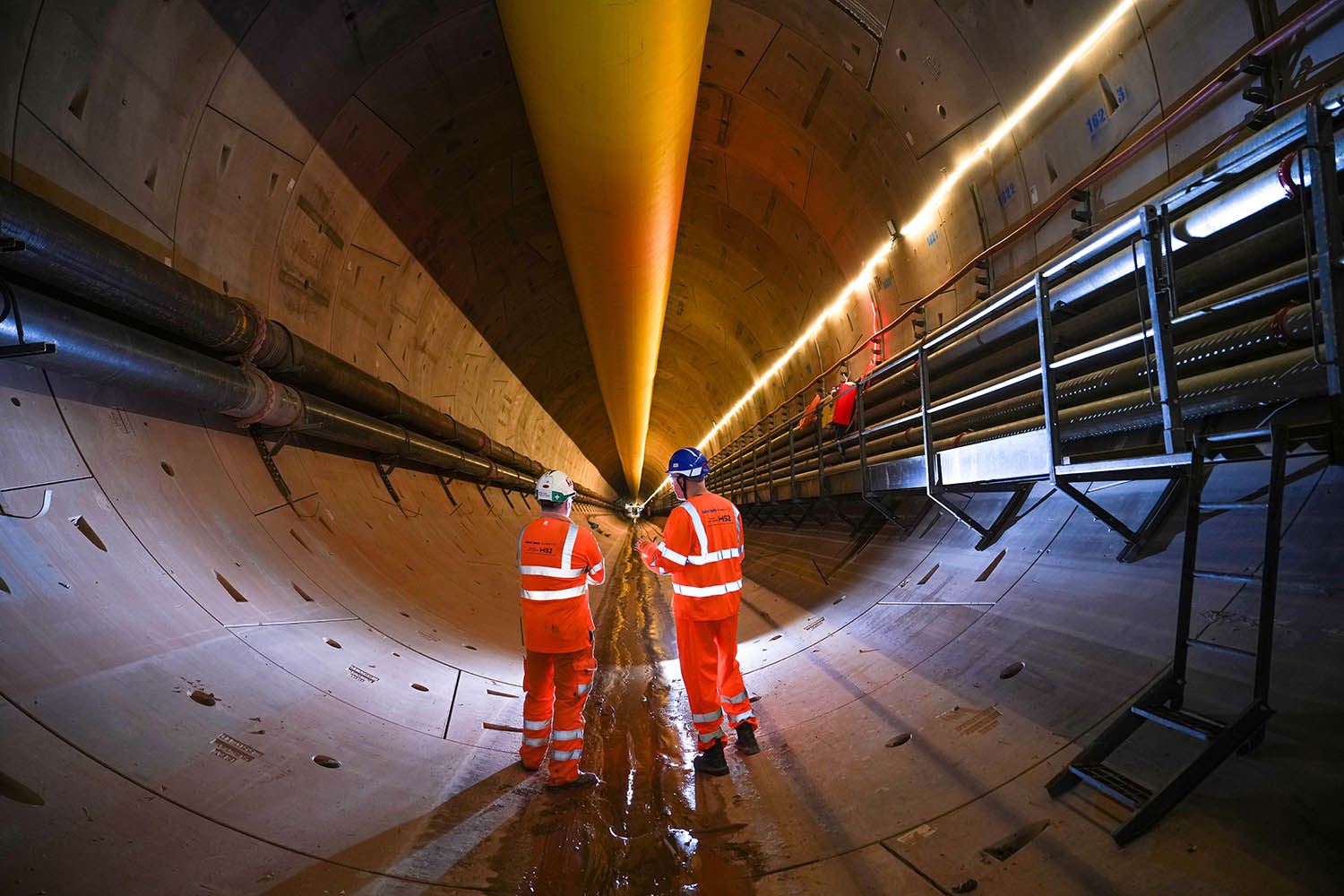Bechstein’s bat is a rarity in Britain. The UK possesses around 20,000 of these tiny insectivores, a fraction of the total national population of several million bats. Typically they roost in southern woodlands – such as Buckinghamshire’s Sheephouse Wood. Here, about 300 Bechsteins have formed a colony: to the delight of conservationists and the anguish of engineers building the High Speed Two rail line.
The route, it was discovered, would hurtle 200-metre trains straight through this precious habitat. The wildlife quango Natural England was aghast and announced it would block HS2’s licence unless the colony was protected.
Proposed solutions included a bat underpass and a giant fence, so “stupid bats didn’t go across the line”, as HS2’s exasperated chief engineer Andrew McNaughton put it. Finally, a 1km, £100m “shed” over the line was approved – a remarkable investment for a few bats.
Such fiscal lunacy has since become emblematic of HS2. The rail line, which was given parliamentary approval eight years ago, was supposed to revolutionise British transport by encouraging passengers to abandon domestic flights in favour of trains that would sweep them from central London to Birmingham, Manchester and Leeds. However, the project was blighted from the start, as the writer Sally Gimson makes clear in this succinct, uncompromising analysis.
The southern leg of the line, passing through rural Tory constituencies, was decreed with scant care or planning, prompting horrified residents to force the trains out of sight and earshot and into expensive tunnels. As a result, only 10 minutes’ open view will be experienced by passengers when HS2’s trains finally get to make their 45-minute journeys between Birmingham and London.
These subterranean trips will ensure southerners hardly ever have to see or hear HS2 trains. Ironically, it also means those in the north will never experience them at all. As costs soared, the Leeds branch was scrapped, then the line to Manchester was axed while work on the line’s hub at Euston in London was abandoned. All that remains is a 84-mile stretch of track under construction between Old Oak Common in outer London and Birmingham: “a multi-billion-pound bleeding stump”, as Grimson puts it.
Other nations – Spain, France and Japan – have built high-speed lines. So why did Britain make such a hash of HS2? Well for a start, Gimson writes, the UK refused – out of hubris and arrogance – to take advice from other nations, and instead plunged ahead without a cohesive, intelligent strategy. “The men in charge were hopelessly out of their depth,” she concludes.
To protect a colony of 300 bats on the route, a 1km, £100m ‘shed’ over the line was approved
Elaborate rail stations and bespoke bridges were ordered when cheaper, modular infrastructure would have saved billions. Then there was the decision to allow trains to travel at more than 225mph, an ambitious velocity even for a high-speed service. (HS1 trains go no faster than 186mph between London and the Channel.)
This was a costly commitment given Britain’s main cities lie closer together than France or Japan’s. Such speeds would shave only a few minutes from journey times but would need trains to travel on ultra-straight tracks without major curves or bends, an inflexibility that made it harder to alter routes when confronted with recalcitrant Tory voters and bat colonies.
Most pernicious of all, argues Gimson, was the abrupt cancellation of HS2’s Manchester link; Rishi Sunak announced he was amputating the project’s last northern limb at the 2023 Conservative party conference – in Manchester. It was a catastrophic decision that will have long-standing implications, Gimson says. “What business in the world would invest millions in winning a UK government-backed infrastructure contract if the project could be cancelled unilaterally by the prime minister, even after an act of parliament had agreed it?”
There are other implications. Freight will still be carried on congested northern roads while the line’s remaining stump will have to be run at a massive loss. Manchester airport, which would have connected with HS2 and reduced passenger loads at London airports, will see no such benefit. A direct result has been the resurrection of Heathrow’s third runway.
Gimson is particularly struck by the “unwillingness of politicians to be accountable for the rising costs, the constant, often destructive scrutiny of and concentration on the money rather than the benefits HS2 might bring.”
These are grim words for a country that is about to celebrate the 200th anniversary of the opening of the world’s first railway, between Stockton and Darlington. It suggests that, as a technological nation, Britain has now utterly lost its way.
Off the Rails: The Inside Story of HS2 by Sally Gimson is published by Oneworld (£18.99). Order a copy from The Observer Shop for £17.09. Delivery charges may apply.
For more on HS2, listen to the Slow Newscast podcast Signal failure: who killed HS2?
Editor’s note: our recommendations are chosen independently by our journalists. The Observer may earn a small commission if a reader clicks a link and purchases a recommended product. This revenue helps support Observer journalism
Photography by Getty Images
